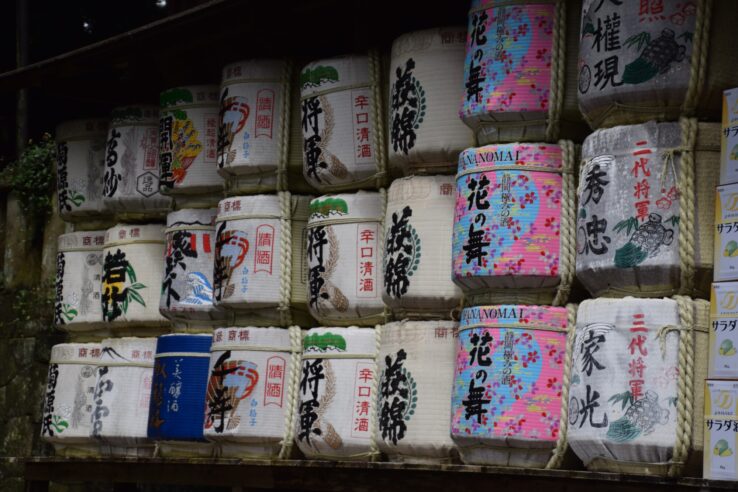Sake and Shochu: A Dynamic Duo for Beverage Enthusiasts
If you’re a beverage enthusiast looking to explore something new and exciting, consider getting to know sake and shochu. These drinks are a dynamic duo that has been enjoyed by Japanese culture for centuries, but more recently, they’ve been making their way into popular bars and restaurants worldwide.
But what exactly are sake and shochu? Sake is a traditional Japanese rice wine that is brewed using a fermentation process. At the same time, shochu is a distilled beverage made from various ingredients, such as sweet potato, barley, or rice.
Despite their differences, these drinks have become popular for those looking for something unique and flavorful. Whether you already love them or want to learn more, there’s no better way to delve into the world of sake and shochu than by taking one of our training and educational courses.
However, before you do that, let’s explore the differences between sake and shochu to see whether you’re interested in becoming a shochu sommelier, sake sommelier, or both!
Soju vs. Sake vs. Shochu: What to Know
Let’s start with the basics (and introduce a third drink into the mix). What’s the difference between soju vs. sake vs. shochu? Soju, sake, and shochu are three popular alcoholic beverages that have their origins in East Asian countries. While they share some similarities, they also have significant differences that every future shochu sommelier should know.
Firstly, let’s talk about soju. Originating from Korea, soju is a clear, colorless alcohol made from grains like wheat, barley, or even distilled rice. Its distinctive taste and aroma are usually quite strong, making it a popular drink for socializing.
Next up is sake, Japan’s national alcoholic drink. Sake is a fermented rice wine with different grades and quality levels. It has a delicate and subtle taste with a smooth finish, making it perfect for pairing with various foods.
Lastly, shochu is a distilled liquor made from various base ingredients such as barley, sweet potatoes, or rice. This drink originates in Japan and is especially popular in the southern Kyushu region. The flavor of shochu is on the mild side compared to soju, with a smooth texture and a distinctive aroma.
What’s the Difference Between Soju and Shochu?
The difference between soju and shochu is that, for starters, soju is a Korean spirit often made from rice, wheat, or barley and has a mild taste. In contrast, shochu is a Japanese spirit distilled from various ingredients, such as sweet potatoes, rice, or barley, and has a more complex and robust flavor.
Additionally, soju typically has a lower alcohol content than shochu, making it a popular choice for social drinking in Korea.
But to summarize the difference between all three — soju is a Korean distilled liquor, sake is Japanese rice wine, and shochu is Japan’s distilled liquor. Their taste and aroma are all uniquely different, making them a dynamic trio for beverage enthusiasts to enjoy and explore.
Is Sake or Soju Healthier?
When it comes to these Asian alcohol varieties, people are quick to ask one question: is sake or soju healthier? Well, the answer isn’t so cut and dry.
Sake tends to have a higher alcohol content and is made from fermented rice, which can have various health benefits like antioxidants and amino acids. Soju, on the other hand, is a distilled spirit made from grains. This means it typically has a lower alcohol content but may contain added sugars.
The bottom line? Moderation is key, and both options can be enjoyed healthily and responsibly.
Sake and Shochu: An Overview
Sake and shochu are two popular drinks sommeliers and beverage enthusiasts often are the most interested in when participating in our courses. If you are eager to learn more about how to drink shochu or the basic serving difference between shochu vs. sake, here are a few tips on how to enjoy each.
How to Drink Shochu
Shochu is usually served over ice or with various mixers like soda and juice. It’s also often enjoyed neat or with hot water. When you’re drinking shochu, it’s important to know that it has a higher alcohol content than sake, so it’s best to sip it slowly and enjoy it in moderation.
You may also want to try different types of shochu to find your favorite flavor profile — from barley to sweet potato, there’s a shochu for every taste bud.
How to Drink Sake
Sake is brewed using rice, water, and koji, a mold used in fermentation. It’s best to serve sake chilled or at room temperature to bring out its unique flavor profile.
Sake is also often served in a traditional ceramic cup, a masu, filled to the brim. This is because it’s considered rude to pour sake for yourself, so someone else usually pours it for you. It’s also often paired with various foods and dishes, so we recommend experimenting with different flavor combinations and finding your favorite pairing.
Shochu vs. Sake: Sommelier Edition
Ready to take your skills to the next level? At Sake School of America, we offer courses for both sake and shochu because we know these beverages offer unique and complex flavors that appeal to beverage enthusiasts worldwide. But did you know that becoming a sommelier in either of these drinks can offer a whole new level of expertise and benefits?
Shochu Sommelier
As a shochu sommelier, you’ll gain knowledge of the creation process, history, and nuances of shochu. You’ll become an expert in differentiating between the types of shochu, which can range from barley, sweet potato, and even rice.
Furthermore, being a shochu sommelier or shochu advisor means you’ll be able to identify specific aromas and flavors, such as vanilla and caramel, produced through unique distillation processes. Ultimately, this course offers professional benefits, such as increasing your earning potential as a beverage professional and your credibility as an expert in the field.
Sake Sommelier
Becoming a sake sommelier offers similar benefits as shochu but with a different set of skills. As a sake sommelier, you’ll learn about fermentation processes, the impact of rice milling rates, and how to identify the flavor notes of different sake categories such as Junmai or Daiginjo.
Additionally, being a sake sommelier means pairing sake with different foods and enhancing their flavors. The benefits of this certification include increases in earning potential, becoming an expert in an increasingly popular drink worldwide, and expanding your knowledge in beverage pairings.
Get Sakes & Shochu Education
Ultimately, sake and shochu are truly a dynamic duo for beverage enthusiasts. Whether you prefer the smooth and delicate flavor of sake or shochu’s bold and earthy taste, there’s a lot to discover and appreciate with these traditional Japanese drinks.
If you’re interested in learning more about sake and shochu, we offer a comprehensive range of sake and shochu education courses that cover everything from the history of these drinks to the art of brewing and mixing.
Click here to view all of our courses and get started!


